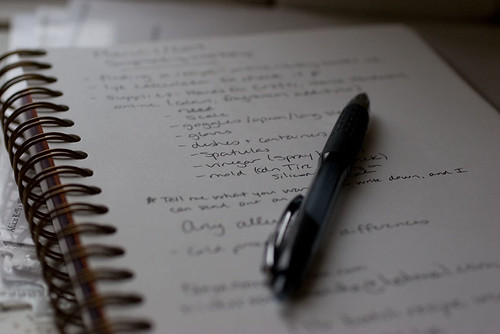Laboratory Report
Definition/Purpose
"Process to document scientific method which can be shared or replicated to others."

A lab report is a document written with the purpose of recording the results of an experiment as to be archived for further investigation or for the mere aim of contributing to deep, analytical understanding. Most of the time, laboratory reports are of great use for students, scientific and social researchers, and analysts hired by companies. They are often kept together in lab report compilations; this in order to make grading easier, to arrange them into similar topics/themes, or just to facilitate posterior access.
|
Table of Contents
|
Lab Reports: Research Genre
Research writing frequently involves observation, experimentation, discovery, and interpretation of different matters. In order to write a good lab report, one must employ these steps. Composing a lab report takes more than just recording data into tables. There is a process behind that leads to the reaffirmation or exposure of a finding. The lab report is used to document the predictions, what was used in the process, how the process was carried out, what the outcome/result was, and the implications of such.
"Systematic investigation to establish facts."
How to Write a Lab Report
There are different variations for writing a lab report. If the lab report is written for a laboratory course, the instructor most of the time will provide with students with an outline of what is expected; view sample presentation specifications here. Yet, the structure of a lab report is very standardized. Each part of the lab report itself must contain specific content. Following is the template that is commonly used in the scientific and academic arenas to produce thorough and coherent lab reports.
"Writing a good lab report is an art, not a science. The best way to learn any art is to practice."
Lab Report Template
The following is the most commonly used template/structure in a lab report.
Title
- A a brief and descriptive title will demonstrate understanding and provide a short synthesis of the lab report.

Introduction/Purpose
- The objective of the experiment is stated (what question needs to be answered?)
- Background information (formulas) or theories related to the experiment are provided
- The importance of the experiment (what implications will it have?)
- A brief description of the specialized methods or materials used (optional)
- IT SHOULD BE NO LONGER THAN ONE PARAGRAPH
Hypothesis
- A possible solution (or the outcome itself) for the problem/outcome of the experiment
- Often uses "If, then"
- It must be testable
- not a testable hypothesis: All water molecules have two hydrogen atom and one oxygen atom.
- It is not testable because the statment is already proven and becuase if the amounts of atoms changed, then it would not be the same molecule.
- not a testable hypothesis: All water molecules have two hydrogen atom and one oxygen atom.
- The hypothesis can be part of the introduction.
- IT MUST BE CRAFTED BEFORE THE EXPERIMENT IS CARRIED OUT

Materials
- An accurate and complete list of the materials/apparatus used in the experiment
Procedure/Methodology
- A detailed paragraph that contains the exact steps taken during the experiment so that anyone else could carry out the same experiment
- It should be written in chronological order (the order in which they actually happened, not the order in which they were supposed to happen)
- COMPLETE SENTENCES MUST BE USED.
Data
- The quantitative data obtained from the experiment is included.
- It is often included in data tables
- Observations made during the experiment are introduced as well.
Results (Figures and Graphs)
- The data previously presented is explained (in words).
- Figures and graphs drawn from the collected data are effective self-explanatory visuals and should be included in this section as well.
- Calculations are made, if needed (often using formulas presented in the introduction).
Analysis/Discussion
- An examination and interpretation of the results
- Was the hypothesis proven to be right? why or why not?
- What do the results indicate?
- If human/material errors occurred during the experiment, they should be mentioned here
- Are the results reliable?
- Discuss the implications of the experiment and how it can be applied
- So what?
Conclusion
- A statement of what is known for sure, and how the experiment helped to arrive to that conclusion.
- Any further research related to the experiment and that might be helpful is stated.
Some lab reports also include a title page, an abstract (before the introduction), page numbers, and references.
Verb Tense
The lab report should written after the experiment and procedure takes places, therefore, all references to the experiment must be in past tense.
The lab report itself, the equipment, the background information, and related theories still exist, hence, all references to them should be in present tense.
Other Tips
- Logical and precise writing is preferred over ambiguous writing.
- Keep the writing impersonal by avoiding the use of the first person (I, we).
- "data" is plural and "datum" is singular
- Scientific terms should be italicized
Sample Lab Report
References
"Science Terms." Quizlet. Accessed 27 Feb. 2009 <http://quizlet.com/print/127832/>
Helmenstine, Anne Marie. "How to Write a Lab Report." ©2009 About.com. Accessed 27 Feb. 2009. <http://chemistry.about.com/od/chemistrylabexperiments/a/labreports.htm>
"Laboratory Reports." Writing Guidelines for Engineering and Science Students. July 2009. Accessed 27 Feb. 2009 <http://www.writing.engr.psu.edu/workbooks/laboratory.html>










